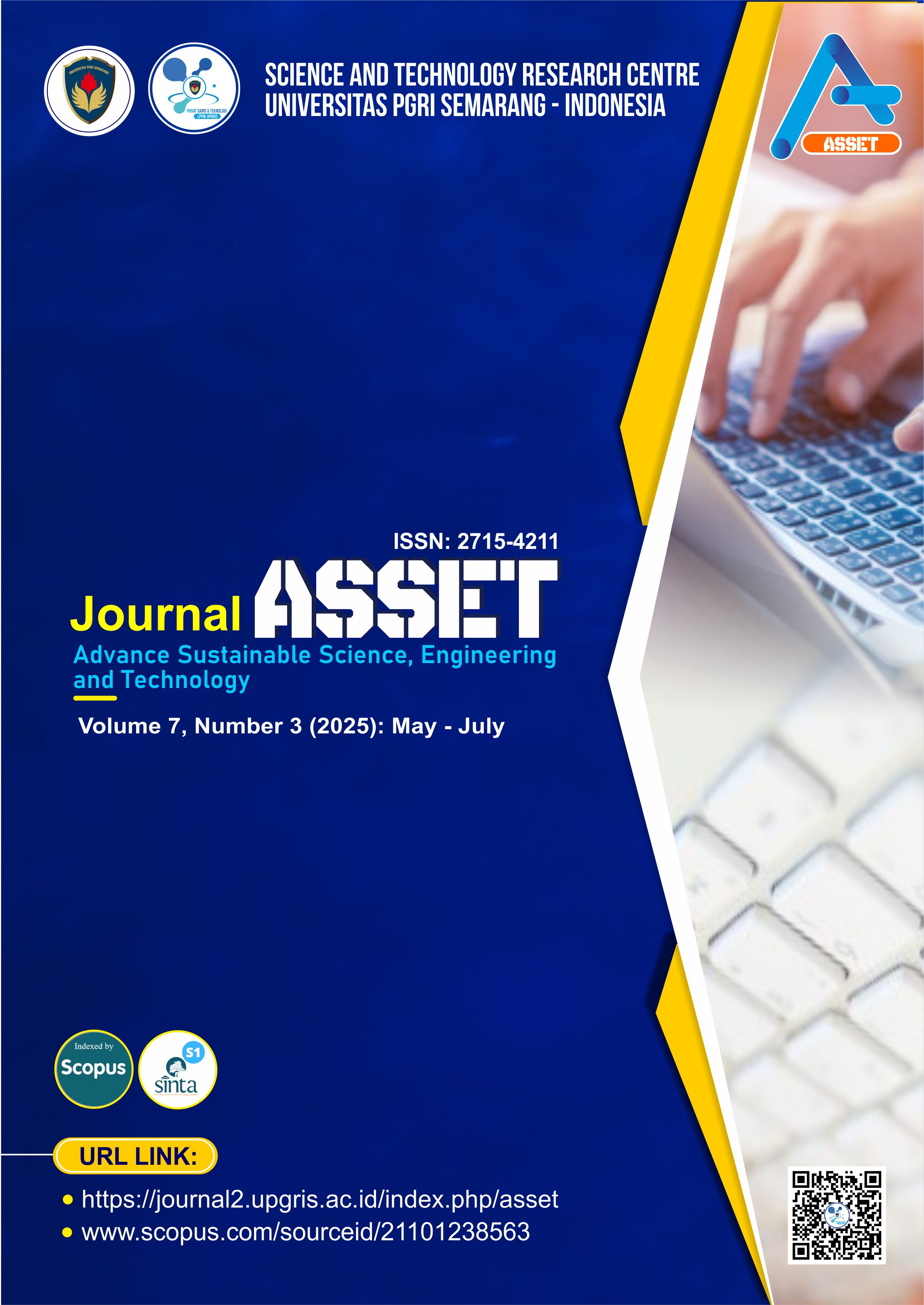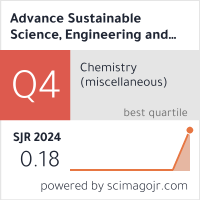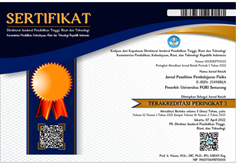Optimizing the Productivity of Traditional Textile Artisans through Education and Training for a Sustainable Cultural Industry
DOI:
https://doi.org/10.26877/asset.v7i3.1896Keywords:
human resources, artisan productivity, capacity building, education and training, cultural industriesAbstract
Lasem handmade batik is part of a cultural heritage that has significant economic potential, but the productivity of its artisans is still low due to limited skills and access to innovation. This problem poses a challenge to cultural preservation efforts in line with sustainable development. This study aims to examine the role of education and training in improving the productivity of Lasem handmade batik artisans. The method used is quantitative, with a sample of 100 artisans purposively selected based on work experience and participation in training. Data were collected through questionnaires and relevant documents, and analyzed using SPSS through validity, reliability, normality, t-test, and F-test. The results showed that education and training have a positive and significant influence, both partially and simultaneously, on the productivity of artisans. The findings confirm that improving access to education and training can strengthen the skills, efficiency and production output of Lasem handmade batik artisans. The implications of this research support the achievement of SDG 8 (Decent Work and Economic Growth) by encouraging capacity building of the cultural sector workforce, as well as SDG 12 (Responsible Consumption and Production) through the preservation of environmentally friendly and sustainable batik production processes. This research contributes to the development of sustainability science by underscoring the importance of empowering traditional communities through education and sustainable innovation.
References
[1] Maranatha News, “Batik Lasem Warisan Nusantara Kebanggaan Maranatha,” https://news.maranatha.edu/featured/batik-lasem-warisan-nusantara-kebanggaan-maranatha/.
[2] H. Kusumo, A. Solechan, and F. Febryantahanuji, “Analysis Determination of the Best Employee Using the Simple Additive Weighting Method,” Advance Sustainable Science, Engineering and Technology, vol. 5, no. 1, p. 0230108, 2023.
[3] M. E. Widiana, K. Karsam, A. A. S. A. Widyastuti, and T. Prasetijowati, “BUKU MONOGRAF MANAJEMEN SUSTAINABLE ENTREPRENEURSHIP BATIK,” 2024.
[4] L. Malihah and A. Nazairin, “Sampah Plastik Sachet Dalam Perspektif Pembangunan Berkelanjutan,” YUME: Journal of Management, vol. 7, no. 1, pp. 198–210, 2024.
[5] A. Nurdin and D. Mulyanti, “Fungsi peranan pendidikan dan pelatihan terhadap peningkatan keterampilan kinerja karyawan di perusahaan,” Transformasi: Journal of Economics and Business Management, vol. 2, no. 2, pp. 85–92, 2023.
[6] D. R. S. P. Lestari and S. Suparwi, “Pengembangan UMKM Batik Tulis Bakaran Untuk Meningkatkan Daya Saing Pengrajin Home Industri Batik Tulis Desa Bakaran Wetan,” 2023.
[7] A. Rahmadani and G. Gunawan, “Pengembangan Desa Wisata Religi Berbasis Budaya Lokal di Desa Nyatnyono,” Umbara, vol. 8, no. 2, pp. 87–100, 2023.
[8] S. I. Purwaningrum, “Analisis Pengelolaan Air Limbah Batik Sebagai Upaya Penerapan Produksi Bersih Kota Jambi,” Jurnal Pembangunan Berkelanjutan, vol. 7, no. 2, pp. 45–55, 2024.
[9] N. Nurfitriani, “Pengaruh Pendidikan dan Pelatihan terhadap Produktivitas Kerja Karyawan Pada Bank Syariah Indonesia KCP Majene,” Valid: Jurnal Ilmiah, vol. 21, no. 1, pp. 62–72, 2023.
[10] N. Murniati and R. O. Rahmah, “Efektivitas pendidikan dan pelatihan pegawai pada masa pandemi covid-19 di rumah sakit ABC,” Jurnal Administrasi Bisnis Terapan, vol. 3, no. 2, pp. 34–42, 2021.
[11] I. Irawan et al., “Pengembangan Sumber Daya Manusia yang Berkelanjutan (Strategi untuk Meningkatkan Keterampilan dan Kompetensi dalam Organisasi),” 2024, Eureka.
[12] T. Isnawati, J. Herawati, and I. S. Kurniawan, “Pengaruh Pendidikan Dan Pelatihan Terhadap Produktivitas Kerja Karyawan Bagian Produksi Pada Cv. Danagung D’briquettes,” Jurnal Penelitian Ipteks, vol. 5, no. 2, pp. 210–215, 2020.
[13] D. Sugiarto, “Sustainability Strategies of Traditional Vannamei Shrimp Cultivation in East Java: A Case Study in Kudu Hamlet, Lamongan District,” Advance Sustainable Science, Engineering and Technology (ASSET), vol. 6, no. 2, pp. 1–14, 2024.
[14] M. Andarwati, E. Subiyantoro, and T. Subadyo, “Pengaruh pelatihan dan penerapan teknologi tepat guna (TTG) terhadap keberdayaan pengrajin batik tulis ramah lingkungan,” Briliant: Jurnal Riset Dan Konseptual, vol. 3, no. 3, pp. 280–286, 2018.
[15] C. T. Setyorini and D. Susilowati, “Pendampingan UMKM Batik dalam mengoptimalkan nilai tambah UMKM melalui pelatihan pembuatan motif batik khas Purbalingga,” Darma Sabha Cendekia, vol. 1, no. 1, pp. 54–61, 2019.
[16] T. Rahaman and S. H. Khan, “Green Merchandising of Textiles and Apparel in a Circular Economy: Recent Trends, Framework, Challenges and Future Prospects towards Sustainability,” Journal of Open Innovation: Technology, Market, and Complexity, p. 100457, 2024.
[17] S. Aliya and T. Tobari, “Pengaruh Pendidikan dan Pelatihan Terhadap Produktivitas Kerja Karyawan Bagian Produksi Pada PT. Semen Baturaja (Persero) Tbk Palembang,” JMKSP (Jurnal Manajemen, Kepemimpinan, Dan Supervisi Pendidikan), vol. 4, no. 1, pp. 97–103, 2019.
[18] H. Kamil, E. Kharisma, J. Churiyah, A. Likhidma, I. N. K. Nikmah, and M. S. Al-Kahfi, “Pengembangan Sumber Daya Manusia Kerajinan Tangan Melalui Pelatihan dalam Upaya Meningkatkan UMKM,” NAJWA: Jurnal Pengabdian Dan Pemberdayaan Masyarakat, vol. 1, no. 2, pp. 123–136, 2023.
[19] P. Glavič, “Updated principles of sustainable engineering,” Processes, vol. 10, no. 5, p. 870, 2022.











